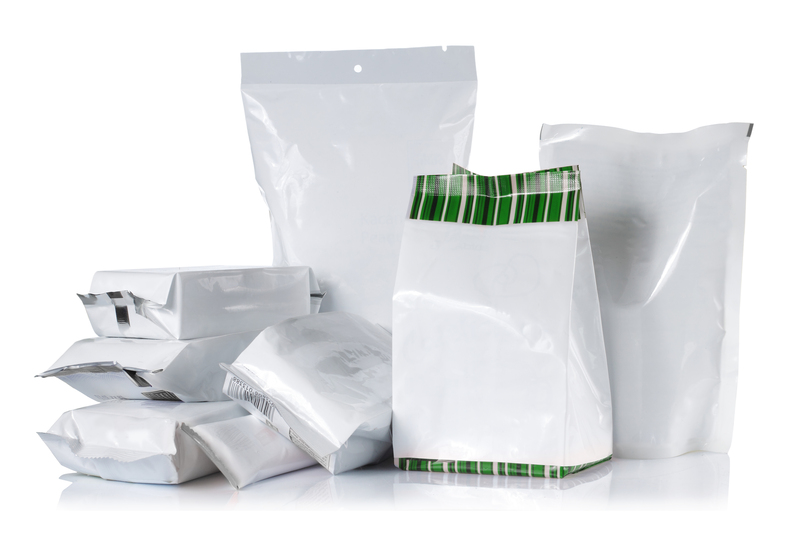Essential Tips on Proper PPE Waste Disposal
In our modern world, the use of Personal Protective Equipment (PPE) has become a daily reality, especially in the healthcare sector, industrial workplaces, public venues, and even in our homes due to the COVID-19 pandemic. With the increasing demand and widespread usage of items such as masks, gloves, face shields, and gowns, the correct disposal of PPE waste is critical. Improper PPE waste disposal poses serious environmental risks and public health threats. Thus, understanding the best practices for PPE waste disposal is vital for everyone.

Why Proper PPE Waste Disposal Is Crucial
Before delving into the practical tips, let's explore why proper PPE waste disposal is so important:
- Reduces Environmental Impact: PPE materials such as masks and gloves are mostly made from non-biodegradable plastics. Inappropriate disposal contributes to pollution, harming wildlife and natural ecosystems.
- Prevents the Spread of Infections: Used PPE can harbor harmful bacteria and viruses. Incorrect disposal increases contamination risks for waste handlers and the community.
- Maintains Public Health Standards: Adhering to correct PPE waste disposal procedures is essential for infection control and upholding hygiene standards in public areas and workplaces.
- Legal and Regulatory Compliance: Many countries and industries have strict regulations governing PPE waste. Non-compliance can result in penalties.
Types of PPE Waste
Understanding the various types of PPE waste is the first step in ensuring proper handling and disposal.
1. Single-Use PPE
- Disposable face masks
- Nitrile or latex gloves
- Shoe covers
- Disposable gowns and aprons
- Face shields and visors (if not reusable)
2. Reusable PPE
- Cloth face coverings
- Washable gowns
- Reusable goggles and face shields
Note: Even reusable PPE can become waste when damaged or at the end of its useful life.
General Guidelines on Proper PPE Waste Management
Establishing and following a dedicated PPE waste management system ensures safety, compliance, and environmental responsibility. Here are essential tips on proper PPE waste disposal for various settings:
1. Segregate PPE Waste Immediately
- Use dedicated bins: Set up exclusive PPE disposal bins in workplaces, public venues, and homes.
- Label bins clearly: Ensure bins are marked with phrases like "PPE Only" or "Hazardous Waste."
- Avoid mixing: Do not mix used PPE with regular household or recyclables as it may cause contamination or complicate waste processing.
2. Use Proper Disposal Bags
- Double-bag system: Employ strong, leak-proof plastic bags; double-bagging adds an extra layer of safety.
- Seal bags properly: Close and tie bags securely to prevent leakage and minimize exposure to waste collection handlers.
- Avoid compressing the waste: Do not press down on bags or compact PPE waste with hands.
3. Follow Local and National Disposal Guidelines
- Check regulations: Different countries or regions may have specific regulations for PPE waste disposal. Follow instructions from your local waste management authority.
- Use authorized collection services: Rely on certified waste contractors, especially for large-scale or hazardous PPE waste.
4. Protect Waste Handlers and Cleaners
- Provide training: Waste handlers should receive training on how to manage and dispose of PPE waste safely.
- Supply PPE: Ensure waste handlers are themselves equipped with gloves, masks, and other protective gear while dealing with PPE waste.
5. Never Reuse Disposable PPE
Once disposable PPE items such as masks and gloves have been used, they must not be reused. Reusing can compromise safety and increase microbiological hazards. Proper PPE waste disposal means disposing of single-use items after one use.
Eco-Friendly Disposal of PPE Waste
With environmental concerns growing, it is imperative to consider sustainable PPE waste management efforts. Here's how you can minimize the negative impact on the environment:
1. Minimize Usage Where Appropriate
- Choose reusable PPE: When suitable, opt for washable face coverings and gowns to reduce waste.
- Educate on necessity: Only use PPE when necessary and educate staff and family members about correct usage to avoid excess waste.
2. Participate in PPE Recycling Programs
- Specialized recycling: Some companies offer recycling programs for nitrile gloves and disposable masks. Explore local options or participate in mail-in recycling programs.
- Remove contaminants: Only uncontaminated PPE should be recycled--follow program guidelines strictly.
3. Avoid Littering and Illegal Dumping
- Prevent wildlife harm: Improperly discarded PPE (like masks in parks or public areas) is not only unsightly but also a threat to animals.
- Set an example: Teach children and coworkers about the dangers of PPE littering and the importance of using proper disposal stations.
4. Support Innovations in PPE Waste Reduction
- Biodegradable PPE: Whenever possible, opt for biodegradable or compostable alternatives.
- Stay updated: The industry is rapidly evolving--stay informed about new materials and disposal solutions that are more eco-friendly.
Specific PPE Waste Disposal Practices By Setting
Healthcare Facilities
- Sharps and medical PPE: Use yellow or red biohazard bags and bins for disposable PPE contaminated with bodily fluids.
- Disinfection prior to disposal: In high-risk environments, pre-treat PPE waste with suitable disinfectants.
- Autoclaving: Where possible, sterilize contaminated PPE waste prior to landfill disposal or incineration.
Workplaces and Offices
- Clearly marked PPE waste stations: Place bins at entry and exit points and in communal areas.
- Regular collection: Empty PPE bins daily and avoid overfilling.
Schools and Educational Institutions
- Educational campaigns: Hold training sessions for staff and students on how to properly dispose of masks and other PPE items.
- Monitor disposal: Assign staff to oversee waste disposal and ensure proper protocols are followed.
Households
- Bag separately: Place used masks and gloves in a small plastic bag, tie it securely, then put it in the general waste bin.
- Keep waste out of reach: Store used PPE out of reach of children and pets until disposal.
- Never flush: Do not flush gloves, masks, or wipes down the toilet.
What Should Not Be Done with PPE Waste
Knowing what to avoid is just as important as knowing what to do. Here are some DON'Ts for proper PPE waste disposal:
- Don't litter PPE in public spaces: This increases pollution and risks spreading disease.
- Don't burn PPE at home: Burning releases toxic fumes harmful to human health and the environment.
- Don't attempt to disinfect and reuse contaminated disposable PPE: This can be dangerous and is not recommended.
- Don't mix PPE waste with recyclables: Contaminated PPE should be kept separate to avoid contaminating the recycling stream.
Common Mistakes in PPE Waste Disposal
Even well-intentioned individuals can make mistakes. Here are frequent errors and how to avoid them:
- Improper bin placement: Bins for PPE waste should be easily accessible but not near food areas or air vents.
- Not replacing full bins: Overflowing bins are a hazard--replace or empty them before they reach capacity.
- Failure to seal bags: Unsealed bags can spill and expose others to contamination.
- Poor awareness among staff: Ensure regular training and reminders to maintain high compliance levels.
Benefits of Following PPE Waste Disposal Best Practices
Proper PPE waste removal offers numerous benefits:
- Protects health and safety: Reduces exposure to patho-genic agents for staff, cleaners, and the public.
- Protects the planet: Minimizes landfill waste, pollution, and environmental harm to ecosystems and wildlife.
- Ensures compliance: Meets legal standards and avoids costly fines or reputational damage.
- Promotes community hygiene: Keeps shared spaces cleaner and safer for all.

Essential PPE Waste Disposal Tips for the Public
For members of the public, here are the top do's and don'ts on PPE waste disposal:
- Carry spare bags: When out, have an extra bag to store used masks until you find a suitable bin.
- Double-bag if possible: Particularly if disposing of waste at home after self-isolation.
- Follow local guidance: Some areas have specific drop-off points for PPE. Utilize them if available.
- Wash your hands: Always wash or sanitize your hands after handling PPE waste.
- Encourage responsible behavior: Remind family, friends, and colleagues about the importance of proper PPE waste disposal.
Conclusion: The Importance of Responsible PPE Waste Disposal
In conclusion, responsible PPE waste disposal is not just an individual duty--it is a crucial public health and environmental responsibility. Whether you're an employer, healthcare worker, student, or member of the community, make it a priority to dispose of PPE waste properly. Segregate, seal, and use the correct collection services. Embrace sustainable choices and stay informed about evolving regulations and best practices. By working together, we can create a safer, cleaner, and more sustainable world for everyone.
Remember: Small steps in PPE waste management lead to significant impacts on public safety and environmental health.
